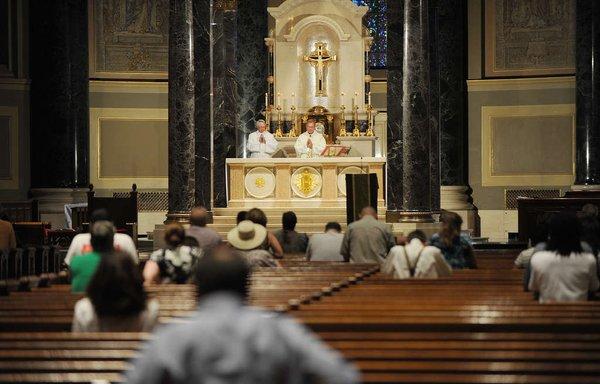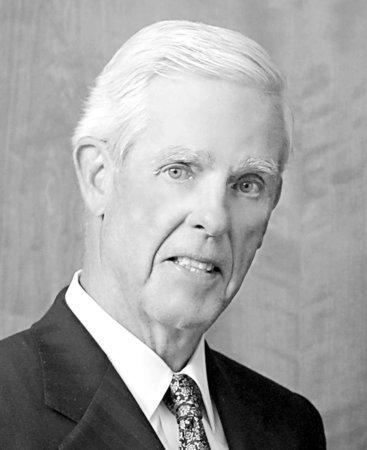Philly Archdiocese's Fund-Raising Campaign Is Falling Short
By Harold Brubaker
When the Archdiocese of Philadelphia set out in late 2008 to raise $200 million in donations, Catholics stepped up generously and pledged $221 million through January 2011. The Heritage of Faith/Vision of Hope campaign gathered $185 million in pledges for the archdiocese and $36 million specifically for parishes, the archdiocese reported. But pledging is one thing. Paying is another. Church officials said in late November, in a long-delayed report, that as of June 30, 2011 - just six months after the pledge period officially ended - collections were falling short. They estimated that they would not collect $41 million, or 22 percent of the $185 million promised to the archdiocese, spokesman Kenneth Gavin said recently. The estimate of the shortfall could go up or down. Through June 2012, Heritage of Faith had collected $85 million in cash, the November report said. Archdiocesan officials would not provide a corresponding figure for anticipated collection shortfalls. The collection period has been extended by a year, into fiscal 2017, Gavin said. Five years is considered standard for a campaign of this magnitude, but extensions are not unusual. Why the big shortfall? Fallout from the priest sex-abuse scandal? Anger over school and parish closings? The economy? Archdiocesan officials would not discuss it, declining in recent weeks to be interviewed. The faltering Heritage of Faith collections come as the financially weak archdiocese merges parishes and trims operations to save cash. Last month, for example, Catholic Social Services eliminated 13 jobs in the consolidation of sites in Chester and Delaware Counties. Giving up on 22 percent of pledges is unusual, fund-raising experts said. "I would say that anywhere between 5 and 10 percent would be viewed as a healthy campaign," said George C. Ruotolo Jr., a fund-raising consultant who has worked with many Catholic dioceses, churches, and schools. "Once you go beyond that, then you need to look at what's the root of the problems," which could be the image of the charity, the economy, or the collection process, said Ruotolo, chairman and chief executive of Ruotolo Associates in Cresskill, N.J. Ten days after the Heritage of Faith pledge period ended in January 2011, a second Philadelphia grand jury report on sexual abuse by priests was released. "I think that after the grand jury report people got their nose a little bit bent out of joint" and decided not to pay, said James J. Maguire Sr., a major donor to the archdiocese who was on the campaign's board of directors. But recently, the tide has turned, Maguire said Friday, and some of those people have decided to pay after all, including one donor of $2 million. The archdiocese's previous major fund-raising campaign, Catholic Life 2000, launched in 1991 and ended in 1997, received pledges of $101 million but collected only $85 million, according to a 2008 Inquirer report on the start of the Heritage of Faith effort. That amounted to a 15.8 percent shortfall after all collections were completed. None of the fund-raising experts interviewed for this article would speculate specifically on the collection problems at the Philadelphia Archdiocese. Bob Evans, a fund-raising expert at EHL Consulting in Willow Grove, would not blame the Heritage of Faith collection woes on the economy. "If you look at the reported charitable giving in 2010 and 2011 - the 2012 figures are not out yet - in both years giving went up nationally," Evans said. But Robert J. Sims, a financial adviser in Wayne who has been deeply involved in the campaign, including the collections phase, put the blame squarely on the economy. "I know what's happening out there. Don't let anybody kid you: There's a lot of people who are tight" financially, Sims said. Donors who promised $100,000 are fine in terms of fulfilling their pledges, Sims said, but people who stretched to pledge $1,000 or $5,000 are struggling. "The money, it's not there," though in the last six months donors have come back in and are making donations, he said. Maguire attributed the positive turn to the new foundation managing archdiocesan high schools. "Faith in the Future has given new legs to the archdiocese," he said. When a campaign counts on many relatively small pledges, "your risk factor goes up exponentially," said Diana Morel a fund-raising consultant whose firm, Serapis Consulting, is based in Chester Springs. As of 2012's end, officials had given up on collecting Heritage of Faith pledges from 5,511, or 12 percent, of the 45,495 total donors, said Gavin. Any shortfall in collections will make it hard to meet the campaign's goals, such as paying for $20 million of restoration and renovation work at the Cathedral Basilica of SS. Peter and Paul, funding $14 million in improvements at St. Charles Borromeo Seminary in Lower Merion, and putting $18 million into an endowment for elementary-school tuition assistance. As of June 30, the archdiocese had distributed $33 million from the campaign, $21.9 million of it to parishes, the November report said. Despite assurances by archdiocesan officials when the campaign was launched that all the money collected for Heritage of Faith would go into a separate nonprofit, where the money would be used only for specified goals, at least $16 million went into the church's general fund. Gavin said it was paid back during fiscal 2012. "The current financial administration implemented a system whereby all collected [Heritage of Faith] pledges are now deposited directly into a [Heritage of Faith] lockbox account," he said.
|
.
Any original material on these pages is copyright © BishopAccountability.org 2004. Reproduce freely with attribution.


